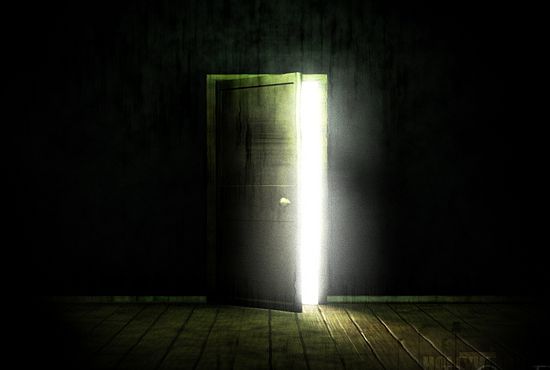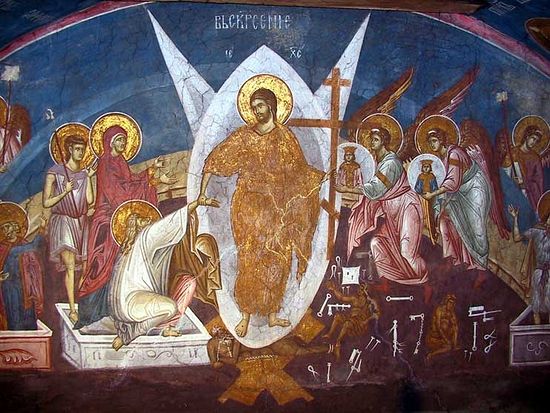SOURCE: Feast of Feasts

The phrase, “behind closed doors,” has become synonymous in English with things being done in secret – generally of an unsavory or nefarious sort. Institutions speak of an “open door policy,” and promise “transparency” to those from the outside. Closed doors have always had a sense of secrecy about them. Sometimes the secrecy hides the darkness of evil, other times it protects us from the wonder of the holy.
The stories of Christ’s resurrection are filled with closed doors. It is a common phrase in the resurrection narratives: “the doors being shut for fear of the Jews.” The disciples had lost their leader and teacher and they feared that they themselves would become victims. That fear led them to flee. It led St. Peter to deny that he even knew Christ. It led them all to hide behind closed doors.
Closed doors occur even earlier. The first doors known in the stories of Scripture are the gates of Paradise. Adam and Eve, having broken God’s only commandment to them, are forced to leave Paradise. The gates of the garden are shut and an angel is set at the gate to guard against their re-entry. More than the story of our first parents – it is the story of man.
The gates represent the brokenness of our communion with God. We exist – we have life – but our life is somehow cut off, “shut out” of its right and proper communion: we stand outside the Garden.
Later mystagogical teaching about the use of doors during an Orthodox service echo this estrangement. The priest praying before the closed doors at Vespers is sometimes said to represent Adam weeping before the closed gates of Paradise.
Our own lives are filled with closed doors – places from which we have been evicted – places into which we may not enter – places that represent secrets and broken relationships. Closed doors have gained an infamous character for good reason.
I can recall as a child standing outside closed doors while adults carried on arguments (“away from the ears of children”). I have stood outside closed doors as I understood responsible adults to be lying. There have been closed doors of wealth, class, education, ethnicity and dialect. Most people, in most places, have a profound sense that there is somewhere they do not belong. I can think of few things as painful as a door, slammed and locked in the midst of an argument.
From the point of view of Christ’s resurrection – the doors are slammed and locked from the other side. The gates of Hades are not closed by God, but by those who would keep God out. The gates Christ smashes are the gates that would refuse entry to the Light of Life.
Even the gates of Paradise are closed only for our protection. It is not the joy of Paradise or any pleasure that God would deny us – only our own efforts to approach to Tree of Life in a manner that did not involve our repentance, and therefore our salvation. To have become an immortal sinner would to have been to become like the demons.
But at Pascha, Christ confronts the doors of fear. Interestingly, he does not smash these doors. He simply appears within. He does not ask His disciples to first overcome their fears so that He may come to them. He comes to them and their fears are overcome. We cannot do what we must do unless He comes to us.
Thus the New Testament image becomes: “Behold, I stand at the door and knock. If anyone hears My voice and opens the door, I will come in to him and dine with him, and he with Me” (Rev. 3:20).
It is not God who has closed the doors – it is God who knocks and who appears inside, though they be closed.
We live in a world of locked and closed doors. Only a loving and resurrected God could overcome such obstacles. Glory to God who appears behind closed doors and sets the prisoners free.
 Fresco from Decani Monastery
Fresco from Decani Monastery
